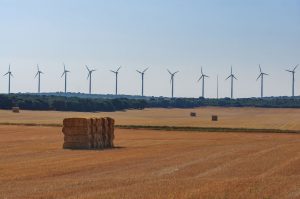“We’re now days away from this becoming the first year in the modern record with no violent tornadoes touching down in the United States,” reports the Washington Post ingenuously under a photo of a May tornado near Tescott, Kansas.
Meteorologists classify as “violent” an EF4 or EF5 on a 0 to 5 scale. Nor is the absence of violent tornadoes a non-blip on the climate radar screen. “In simple terms,” the Post article continues, “there have been downtrends in violent tornado numbers both across the entire modern period.” The 15-year average in the mid-1970s was as high as 13.7. Next year that average will drop to 5.9.
The policy implications of this trend are intriguing. For years, the public has been told that tornadic activity is just one more proof, if proof were needed, of the perils of climate change. Some recent article show the media’s indifference to the facts–and the tornadoes–on the ground.

In an alarmist New York Times article from August 2018, reporter Kendra Pierre-Louis quotes Noah Diffenbaugh, a professor of earth system science at Stanford University, as saying, “We do have strong evidence that at the large scale that global warming is likely to increase the atmospheric environments that create the kind of severe thunderstorm that produces tornadoes.” The article makes no reference to the trends cited in the Washington Post article.
As the headline suggests–“Climate Change Is Wreaking Havoc Now”–a November 2018 article in US News & World Report was even more alarmist. “While it is difficult to attribute individual storms and other disasters, such as tornadoes or wildfires, to climate change,” reports Alan Neuhauser, “long-term shifts in temperature, precipitation and other trends, have created the conditions for such weather phenomena.”
Neuhauser, like Times reporter Pierre-Louis, had access to the same data as the Post reporter. As has become normative in climate reporting, the media simply suppress data that refute their larger thesis that man-made climate change will destroy the planet without massive government intervention.
The Post deserves credit for pointing out the obvious, but it does so in a vacuum. Its reporter Ian Livingston makes no allusion to climate change and its relationship to tornadoes. He does not even use either the phrase “climate change” or “global warming.” And lest one think him Pollyanish, he ends on a down beat, “Despite the downward trend in annual numbers, studies continue to find that more tornadoes are happening on fewer days. In that light, it is certainly possible this drought won’t last much longer.”
Meanwhile policy makers in an historically tornado prone state like Kansas are expected to make long term investments based on the short sighted manipulations of media alarmists.

